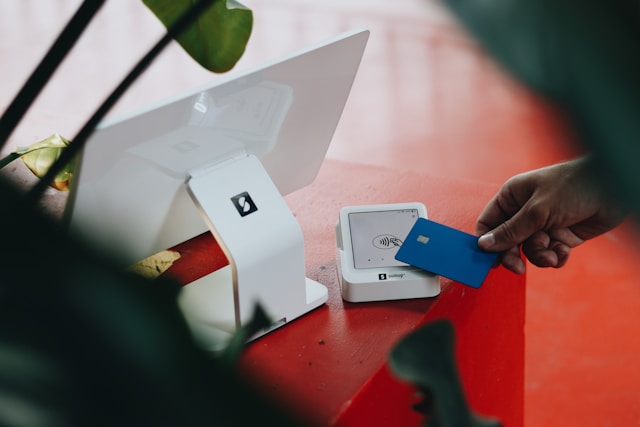Starting your business using the Shopify platform is an exciting journey. But it’s easy to overlook some common mistakes that can break your success at times. If you are going to launch your first store on Shopify or scale the existing store, avoiding some common mistakes will help you build a solid foundation ensuring long-term growth. Now, in this article, you are going to explore 10 common Shopify mistakes that usually new store owners make and how to overcome those.
- Selling Too Many Products at Once
- Using Low-Quality or Oversized Images
- Overlooking Mobile Optimization
- Poor Store Design and User Experience
- Making the Checkout Process Too Complicated
- Spending Your Entire Marketing Budget on a Single Ad Channel
- Overloading Your Store with Too Many Apps
- Improper Inventory Management
- Treating Email Marketing as an Outdated Strategy
- Not Setting Up Proper Payment Gateways
1. Selling Too Many Products at Once

One of the common Shopify mistakes for new store owners is to sell too many products at once. It’s difficult to build a strong brand identity on a particular product when dealing with multiple products simultaneously. Also, it will confuse your potential customers increasing the probability of losing them. According to a Shopify study, 70% of new store owners struggle to select the proper niche. To make your Shopify store more sustainable in the long run, you should always keep a few points in mind –
- Focus on a few well-chosen niches initially
- Start small and try to build a solid customer base
- Test the market with your primary chosen products
- Don’t overwhelm your customers with too many offers
- Try to create memorable offerings that can help remember your brand identity
- Before you expand your product range, ensure proper customer service and supply chain
2. Using Low-Quality or Oversized Images

There is a lower chance that your blurry product image can impress your customers. Also using overly large images is a mistake. Low-quality visuals will lose your customer trust and eventually, it will affect your CRR(Customer Retention Rate). To ensure that low-quality product image does not affect your business –
- Optimize your image size to Improve your website load times without losing the quality
- Invest in high-quality images that showcase your products in the best light
- Check your website speed regularly to ensure a better user experience.
A clear image reflects the true value of your product. A quality image is the first thing that will attract your customers, oppositely, for a pixelated or slow-loading product image, customers will bounce off your store without making a purchase.
3. Overlooking Mobile Optimization

A recent study shows that in 2024 approximately 76% of Adult Americans have made their purchases using mobile devices. So overlooking mobile optimization for your Shopify store might be a big Shopify mistake. You will miss many sales as well as potential buyers. Additionally mobile optimization matters because –
- Google helps mobile-friendly sites attain better search rankings
- It ensures easy browsing for customers and smooth add-to-card and checkout on any device.
- US users of ages 30 to 49 are more likely to buy things online using mobile phones. Optimizing your Shopify store for mobile ensures you are not missing this huge possible customer base.
Here is what you can do to ensure your store is optimized for any device –
- The first thing you need is a mobile responsive Shopify theme. Choose a Shopify theme that functions well on any device.
- Test your store on desktops, tablets, and mobile phones and ensure that it’s running smoothly on all devices.
- Make sure the images are not of large files and your site loads quickly on multiple devices.
Check for any device your Shopify store is fully optimized and ensure the best shopping experience for your customers no matter how they browse.
4. Poor Store Design and User Experience

You may have a quality product in your store, but poor store design might be the only reason your customers will leave your site without purchasing anything. Your store design and user experience (UX) decide whether your customers stay or leave. Here are a few tips to improve your store design and UX:
- Do not assume that your online store functions well on all devices. Navigate your site on a mobile phone and ensure that everything works fine and looks great.
- Gather feedback from your real customers to find the improvement areas.
- Do not neglect your site footer. Include FAQ, contact details, and other important info.
- Make “Add to Cart”, and “Checkout” buttons easy to find. This will help customers understand what to do next.
5. Making the Checkout Process Too Complicated

Complicated checkout process is another major reason why customers abandon their cart. Do not implement any checkout process in your store that requires too many steps and it becomes like a maze. An easy checkout process helps convert your visitors into potential buyers.
Since a huge number of customers use their mobile for placing orders online, the checkout process with many steps and complications on a small mobile screen will turn them away.
Simplify your checkout process with fewer steps. Ensure that it takes no more than 3-4 steps to complete the checkout process. Remove any unnecessary fields and mention your accepted payment methods.
If you are dealing with wholesale products, make sure your customers do not need to follow too many steps to complete the orders for the same product of different variations. You can use the one-click bulk order tool from the Shopify app store to ensure a smooth checkout process. This might cost you some money, but it will eventually help you increase the conversation rate and retain more potential customers in the long run.
Use a minimalist Shopify theme and make your checkout page easy and simple. This will leave your customers with a positive impression of your store and encourage them to come back again.
6. Spending Your Entire Marketing Budget on a Single Ad Channel

If you are planning to spend all your budget on a single ad channel, this is going to be your next biggest Shopify mistake. Do not limit your reach by relying on one source. If things go wrong, it will leave you vulnerable.
Diversify your marketing plan through – social media campaigns, email marketing, influencer partnerships, and others. This will give you more control and ensure your reach to a wider audience. Spread your budget on your diversified marketing plan, get better results, and reduce risks.
7. Overloading Your Store with Too Many Apps

Well, it’s efficient to use Shopify apps to boost sales and smoothen your customer experience. But you should carefully choose any tool that can truly add value to your business.
Using too many apps can sometimes complicate managing your store. It can slow down your site also. Here are four crucial tips you can follow before choosing any Shopify apps –
- Select apps that directly align with your business and make the best impact on your growth.
- Check the reviews and ratings of the apps to get absolute insights into the apps.
- Consider the app’s performance. If possible try the free trial of the apps and check the speed and performance and then make the commitment.
- Look for a strong support team from the app provider. A solid support team can help you get the most out of the apps.
Ensure a streamlined Shopify store with only essential apps that can smoothen customer experiences and build a strong customer base for your business.
8. Improper Inventory Management

Consider the below 3 points to realize why proper inventory management is crucial –
- To avoid stockouts
- To avoid overstocking
- To ensure smooth order fulfillment
You may miss out on sales if you understock popular products. If you struggle to keep proper track of stock levels, you may have a poor customer experience. You may lose customer’s trust when they place orders and you do not have it in your stock.
Without a solid system in place, you may struggle to manage your inventory. You can use Shopify inventory management tools. These built-in tools are free to use for all Shopify merchants. You can track and manage product stock levels and set up inventory alerts.
However, for more advanced features like multi-location inventory tracking, applying Minimum Order Quantity (MOQ), and detailed reporting, you might be required to use third-party Shopify inventory apps. But for basic inventory management, you can use Shopify’s default tool without any additional cost.
9. Treating Email Marketing as an Outdated Strategy

Email marketing is not outdated, instead, its still an effective way to engage with your audience and drive sales. Here’s why you should not ignore it –
- Compared to other channels, email marketing delivers a high ROI(Return on Investment). Your email list can be a valuable asset for your business.
- Make a direct relationship with your customer in personal way.
- Once you know your customer purchase history, you can send them relevant offers through emails.
- Shopify apps make it simple to automate emails like welcome messages, abandoned cart reminders, and post-purchase follow-ups. This saves you time while keeping customers engaged.
You should not ignore the power of email marketing. It’s a cost-effective way to grow your Shopify store and encourage your customers to come back.
10. Not Setting Up Proper Payment Gateways

Not setting up proper payment gateways is a common Shopify mistake. If you don’t offer enough payment options, you could lose sales. Make sure to set up popular gateways like PayPal, Shopify Payments, or Stripe, so customers can pay easily and securely. The more payment options you offer, the better the shopping experience for your customers.
Conclusion
Avoiding common Shopify mistakes can make a huge difference in the success of your online store. Whether it’s managing inventory, choosing the right apps, or setting up payment gateways, each decision you make can impact your store’s performance and customer experience. By learning from these errors and applying the right strategies, you’ll be on your way to building a stronger, more profitable Shopify business. Stay focused, keep optimizing, and watch your Shopify store thrive!











